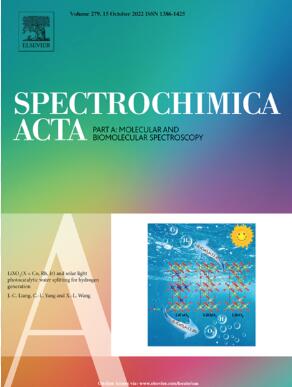Theoretical study of aromatic and N-heterocycles: Potential carriers of interstellar aromatic infrared bands
IF 4.3
2区 化学
Q1 SPECTROSCOPY
Spectrochimica Acta Part A: Molecular and Biomolecular Spectroscopy
Pub Date : 2025-01-31
DOI:10.1016/j.saa.2025.125811
引用次数: 0
Abstract
Heterocycle compounds that contain nitrogen play important roles in astrobiology and terrestrial biology as a building block of nucleic acid. Nitrogen inclusion in polycyclic aromatic hydrocarbons (PAHs) is also proposed to account for the emission band at 6.2 µm observed in the interstellar medium (ISM). This work comprehensively studies the theoretical microwave, infrared (IR), and ultraviolet (UV)/visible spectra of aromatic and N-heterocycles in the gas phase and water solvent. In this study, one tricyclic tetrahydroquinoline (THQ) and two fused polycyclic quinolines, and their carboxylic acid substitutions in their neutral and ionic states are reported for the first time. All the calculations are performed at the B3LYP/aug-cc-pVTZ level of theory using the Gaussian 16. The rotational constants are obtained at this level of theory, which are further used to calculate the rotational spectra and their transitions. The IR spectra of these molecules are also reported to discuss possible carriers of the aromatic infrared bands (AIBs) observed in the ISM. The electronic absorption spectra of the molecule are also obtained using the time-dependent density functional theory (TD-DFT) at the same level of theory, allowing us to determine the energy gap between the Highest Occupied Molecular Orbitals (HOMO) and Lowest Unoccupied Molecular Orbitals (LUMO) and discuss their stability. We further estimate the transition wavelength, oscillator strength, and symmetry using the AOMix. This study contributes to understanding the physicochemical properties of the building blocks of genetic molecules.

求助全文
约1分钟内获得全文
求助全文
来源期刊
CiteScore
8.40
自引率
11.40%
发文量
1364
审稿时长
40 days
期刊介绍:
Spectrochimica Acta, Part A: Molecular and Biomolecular Spectroscopy (SAA) is an interdisciplinary journal which spans from basic to applied aspects of optical spectroscopy in chemistry, medicine, biology, and materials science.
The journal publishes original scientific papers that feature high-quality spectroscopic data and analysis. From the broad range of optical spectroscopies, the emphasis is on electronic, vibrational or rotational spectra of molecules, rather than on spectroscopy based on magnetic moments.
Criteria for publication in SAA are novelty, uniqueness, and outstanding quality. Routine applications of spectroscopic techniques and computational methods are not appropriate.
Topics of particular interest of Spectrochimica Acta Part A include, but are not limited to:
Spectroscopy and dynamics of bioanalytical, biomedical, environmental, and atmospheric sciences,
Novel experimental techniques or instrumentation for molecular spectroscopy,
Novel theoretical and computational methods,
Novel applications in photochemistry and photobiology,
Novel interpretational approaches as well as advances in data analysis based on electronic or vibrational spectroscopy.

 求助内容:
求助内容: 应助结果提醒方式:
应助结果提醒方式:


